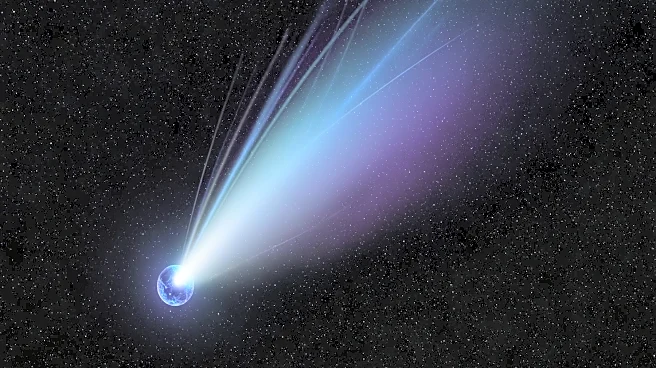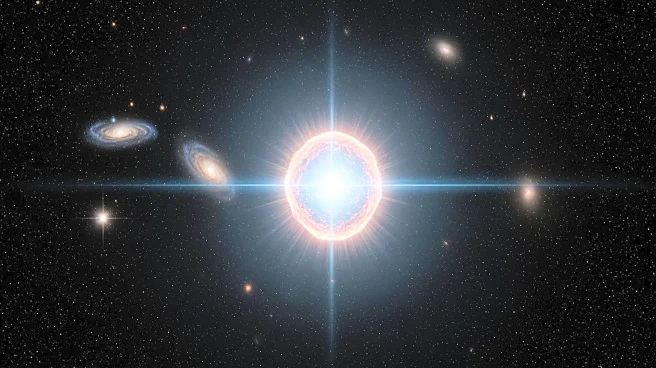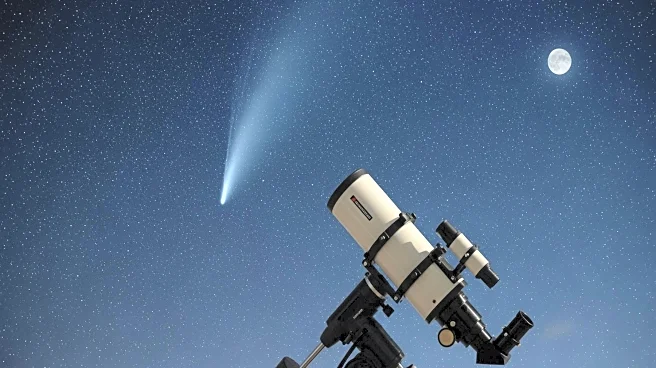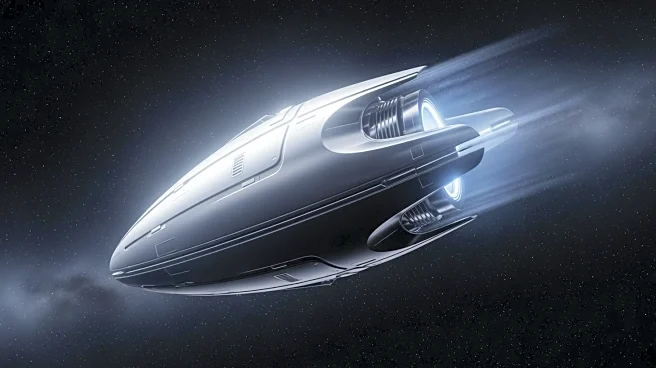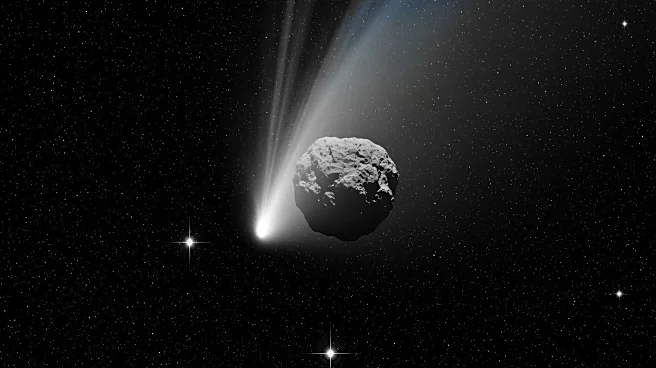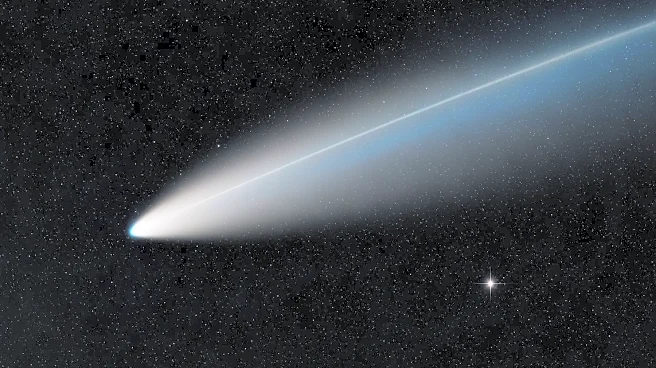What's Happening?
The interstellar comet 3I/ATLAS, the third-known object of its kind to visit our solar system, has recently shown signs of changing color, potentially developing a blueish hue. This follows a rapid brightening event while the comet was obscured by the sun.
Initially discovered moving towards the sun at high speeds, 3I/ATLAS is believed to be over 7 billion years old, having been ejected from its original star system. Recent observations suggest the comet's color change may be due to gases like carbon monoxide or ammonia leaking from its surface. Previously, the comet exhibited red and green hues, attributed to dust and chemical compounds like dicarbon or cyanide. As the comet becomes more visible to Earth-based telescopes, researchers are keen to study these changes further.
Why It's Important?
The color changes observed in 3I/ATLAS are significant as they may provide insights into the composition and behavior of interstellar objects. Understanding these phenomena can enhance knowledge of cometary physics and the materials present in distant star systems. The comet's behavior, including its brightening and color shifts, could inform future studies on the impact of cosmic rays and the evolution of cometary bodies over billions of years. This research is crucial for astronomers and astrophysicists aiming to unravel the mysteries of interstellar space and the origins of such objects.
What's Next?
As 3I/ATLAS approaches its closest point to Earth on December 19, researchers will have the opportunity to observe the comet in greater detail. This period will allow for more comprehensive studies of its composition and behavior. Additionally, two ESA spacecraft may pass through the comet's tail, potentially providing further data on its properties. Continued observation will be essential to determine if the blue coloration persists and to understand the underlying causes of these changes.
Beyond the Headlines
The study of 3I/ATLAS could have broader implications for understanding the dynamics of interstellar travel and the potential for life-supporting conditions in other star systems. The comet's unique characteristics, such as its high levels of carbon dioxide and water leakage, may offer clues about the environments of its origin. This research could also contribute to the development of new technologies for tracking and analyzing interstellar objects.





